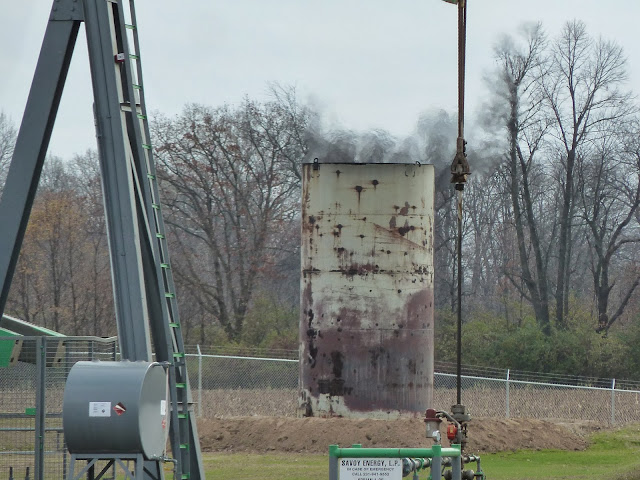Visible even from space, more than 1,500 natural gas flares illuminate the prairie in the Bakken oil field in North Dakota, for lack of gas pipelines. Image credit: Jim Wilson/The New York Times
In the December 17 issue of the NYT, Clifford Krauss writes that flaring in the Bakken field in North Dakota can be seen from space. World-wide flares produce an estimated 400 million tons of carbon dioxide every year, equivalent to the emissions 77 million cars.
The article reports that companies are starting to think that it might be economical to capture the gas and use it to power machineries. In fact so much is flared right now in the Bakken field alone that if all drilling equipment would be powered with the gas instead of expensive diesel fuel, it would only take about a fifth of what is flared. The article praises the economical sound decisions of companies going this way as there are no legal ways to make these booming industries stop flaring. North Dakota allows flaring for the first year of every new well but grants extensions if it is not economically beneficial for companies to capture the gas. The same kind of laws we have in Michigan. One could ask why is the companies' new willingness to do the right thing at least in part the only way to stop this insanity? Why can we not just change these stupid and outdated laws that sell off our land, water and air to the highest bidders that do nothing for the public than harm our health and threaten the survival of our children?
Full article here: Applying Creativity to a Byproduct of Oil Drilling














